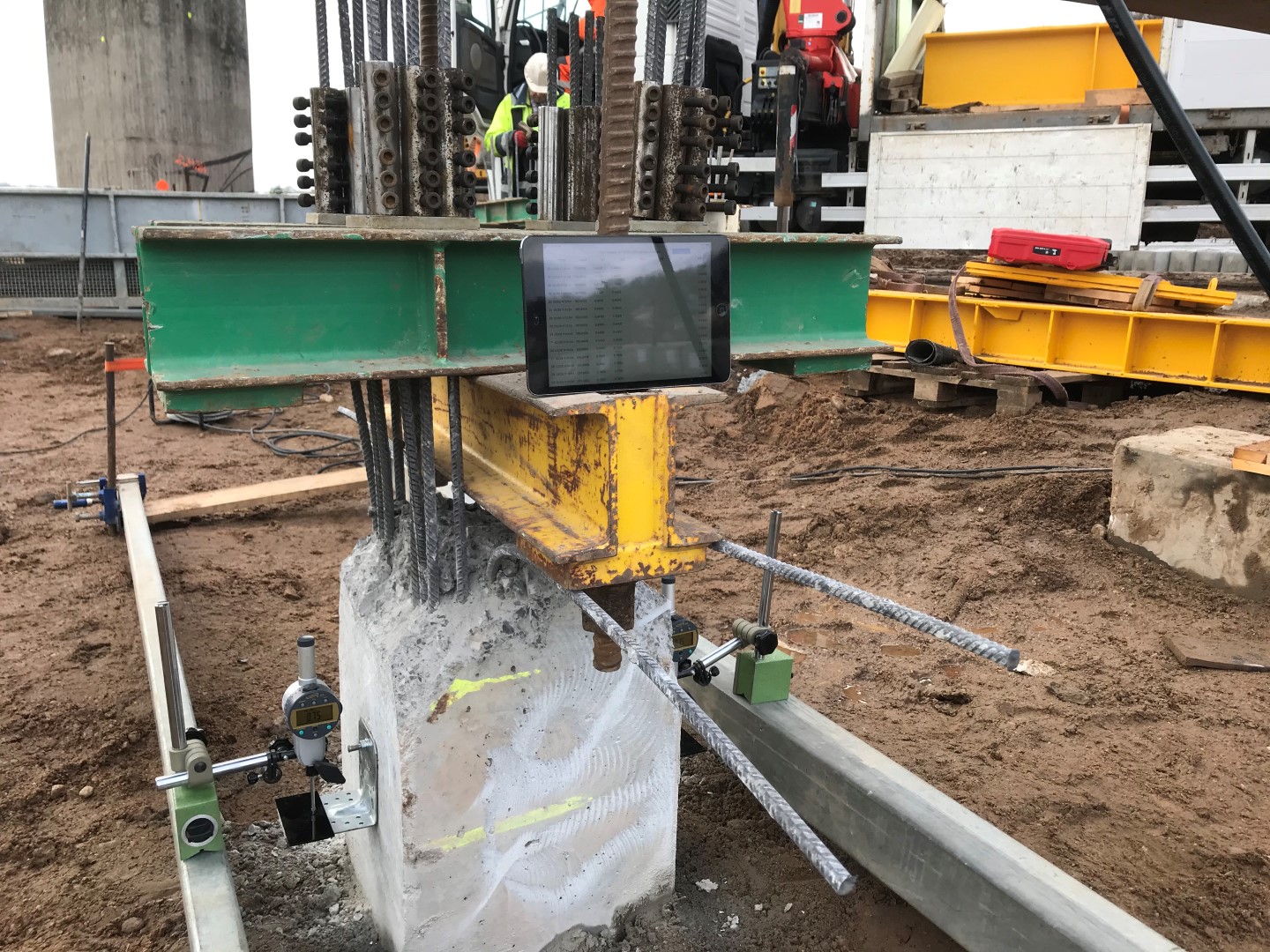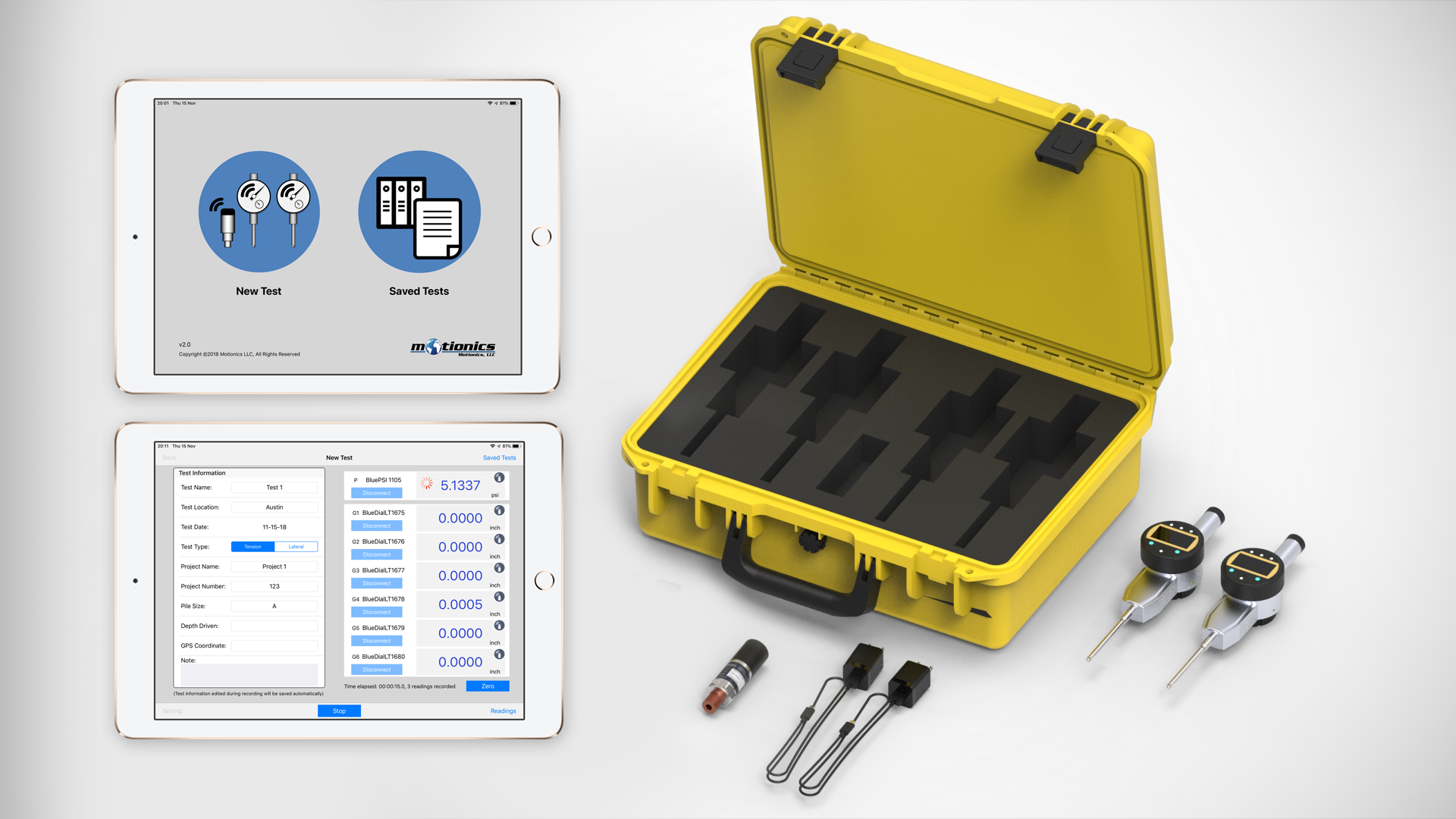Case Study: Using PileSense™: Wireless Static Pile Load Test Kit by Motionics to Conduct Pile Load Tests
Year: 2020
Location: Lithuania
Hardware: PileSense™: Wireless Static Pile Load Test Kit – 15K PSI BluePSI Bluetooth Pressure Sensor & 2x 2” BlueDialLT Wireless Dial Indicators (BDLT-302)
Software: PileSense iPad App
Application:
The company in this case deals with the design and construction of foundations and
underground structures in complex technological and geological conditions. In some
situations, this involves conducting pile load tests, including static load tests, lateral
static load tests, and static tension tests.


Their initial setup consisted of mechanical gauges, both for deflection and load
measurements. The company was seeking to modernize their setup and increase safety
and efficiency in their application. Their digital options involved either a wired solution
or a wireless solution; they opted for a wireless solution with PileSense™ by Motionics.


In switching their system to a wireless kit, they swapped out the mechanical dial
indicators for wireless digital dial indicators, specifically BlueDial-LT-302, a digital dial
indicator with a 2” range and an integrated Bluetooth transmitter on the back. The
analog pressure sensor was swapped with a BluePSI15K unit, a pressure sensor with a
measurement range of up to 15,000 PSI and a proof/burst pressure of 20,000 PSI.
By pairing an iPad with these measurement tools and running Motionics’ PileSense iPad
app, the operators were able to view live deflection and load readings remotely, record
those readings, and save them for later viewing and analysis. The app also
automatically calculated average deflection and has an option to enter a jack
calibration equation for automatic pressure-load conversion.


The operating team for these pile load tests have reported an improvement in the
quality of data collection, with discomfort and error minimized without the need to
take manual readings in unfavorable or dark conditions. The new data collection
method also saves time, allowing operators time for preparation, assembly, and
disassembly of beams as the measurements are being taken automatically.